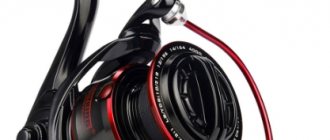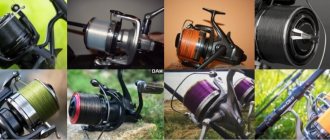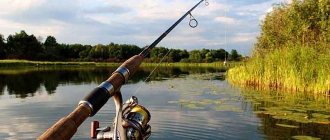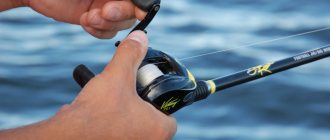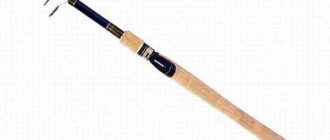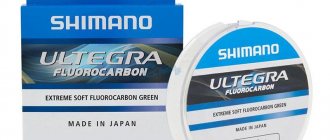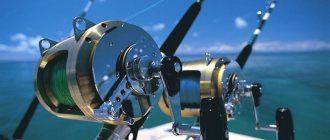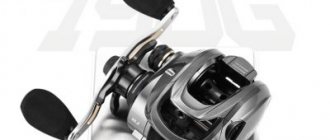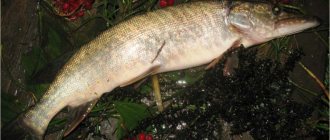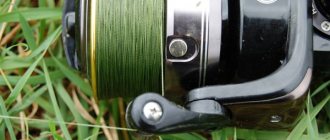Maintenance and repair
Good inertia-free motors are quite expensive: the cost of successful budget models from trusted manufacturers now starts from 1.5-3 thousand rubles.
This is not an unimaginable amount, but you don’t want to lose it just like that. Therefore, you should provide the inertia-free machine with proper care, and basic repairs can be done with your own hands. At the end and before the season, the reel needs to be lubricated. We recommend using lubricants from the same manufacturer, but you can simply select the composition in accordance with the characteristics. For colder times, thinner formulations are used, and for warmer times, thicker formulations are used. Ordinary engine oil will not work in this case - individual elements will still be subject to corrosion.
If water gets inside the mechanism, it is highly advisable to disassemble it, dry it and lubricate all parts. And if the coil creaks or works with obvious tension, you definitely shouldn’t turn the handle by force: you need to figure out the reasons - maybe some kind of debris has gotten into the mechanism or a burr has formed that can be cut off?
Basic parameters when choosing a spinning rod
Any modern reel is a rather complex mechanism, so its choice needs to be taken non-trivially, carefully studying all its main parameters. Of course, any good fishing store will tell you what types of spinning reels there are, tell you about their advantages, etc. But a good fisherman should know for himself what model he needs and why.
The test is the range of bait weights in which this spinning rod will work. The lower value shows the minimum weight that will be felt by the rod when casting and retrieving. The upper one is the maximum possible; exceeding it leads to breakage of the fishing rod or loss of sensitivity during fishing.
According to this criterion, all spinning rods are classified as follows:
- Ultralight or ultralight (designated UL).
- Light or light (L).
- Medium-light (ML).
- Medium (M).
- Medium-heavy (MH).
- Heavy (H).
- Extra heavy or heavy (XH).
What is important here is the compactness of the gear, ease of handling, and the ability to make short but accurate casts of bait. For large reservoirs, large rivers and huge lakes, where the range of the fishing rod is critical, it is advisable to choose tall poles.
This will allow you to easily make long-distance throws, catching the treasured edges and channel snags.
Action is the shape of a fishing rod's bending under static load and is an important parameter that significantly influences performance characteristics. According to this indicator, all spinning rods are classified as follows:
- Slow or “parabolic” (Slow).
- Moderate.
- Moderate Fast.
- Fast.
- Extrafast.
When answering the question: which spinning rod is better for a beginner to choose, you need to understand in what conditions and what baits you plan to use for the upcoming fishing.
Choosing a reel and line for beginners
There are a lot of budget spinning reels on sale now. They can be safely recommended to beginners, since they fully cope with the basic requirements. The presented article about the rating of reels will help provide additional clarity.
The kit for a beginner will be assembled when, along with the question of how to choose a spinning rod and reel, it will be determined what to use - fishing line or cord. It all depends on the baits used.
When fishing with wobblers or silicone baits, it is better to immediately give preference to braided fishing line, but it is more advisable to master spinners and oscillating spoons on monofilament. The article on choosing fishing line will tell you more.
Reviews from fishermen
The price is of course high, but I decided to try it anyway, since I have quite a lot of different devices in my luggage. Having asked the sales consultant for advice on choosing the very first reel, he boldly pointed me to the Ryobi Zauber CF. After comparing the prices of this model and others, I decided to buy and did not regret it. For an experienced fisherman, fishing with the device is a pleasure, and I’ll tell you right away about the cost after the first fishing, I immediately forgot. A decent device, but the downside is the price and the inability for a beginner to work with the reel.
Grade:
Anatoly, 42 years old
If I had the opportunity to buy an endless screw with a coil at a cost lower than in stores, I would definitely take advantage of it. But at present, financial difficulties do not allow me to purchase such a plan. Grade:
Maxim, 35 years old
I don't think such a high price tag is right. But to be honest, having the opportunity to buy such a reel without infringing on one’s desires, I would definitely do it. I came to this conclusion after testing such a device with a friend. I recommend it to everyone. Grade:
Denis Vasilievich, 55 years old
I am new to fishing and do not agree at all when they say that the mechanism is difficult for us. I love fishing and always test a lot of new products. The high cost is not a decisive factor for me, so I did not notice any shortcomings for myself. Grade:
Sergey, 21 years old
A waste of a lot of money, just another dud. I would never have allowed myself to buy it, even if I had the money to buy it. I think that such a device is only for competition between fishermen who has the coolest tool. I go fishing for recreation, so I don’t see the point in buying expensive and not durable equipment. Grade:
Alexander, 36 years old
In the arsenal of a fisherman who constantly has a good and high-quality catch, there are enough devices, which include not only equipment, but also a variety of lures and baits. It is worth mentioning the costs that are invested directly in such acquisitions.
But without any doubt, I can only note that not a single experienced fisherman makes a purchase spontaneously; first, having learned about the new product, he will ask his colleagues for reviews, only after that he will go to several points of sale of the device, focusing on the cost, and will purchase the device.
Main types of coils
Next, it is worth considering the main classification of modern reels. Today there are 3 main types, among which it is recommended to choose. These are inertial, inertial-free and multiplier models. It is worth considering each category in more detail.
Inertia coils
First of all, let's look at the outdated type of coils, which are used less and less. Such models were used everywhere when they were first invented, since the technologies of that time did not allow the implementation of a more efficient mechanism. When using an inertial reel, the line is adjusted not by a mechanism, but by fingers. This significantly complicates the process of fishing.
However, it is worth noting that such coils are still used today. These are mainly jig spinning rods, which involve fishing in the bottom area of a reservoir. This is due to the fact that in this type of fishing, adjusting the line using your hand is an advantage for a more efficient process.
Pros:
- Lowest cost among all types;
- Most models are equipped with an impressively sized drum, which allows the use of the longest fishing lines;
- High degree of sensitivity, which has a positive effect on timely hooking of fish;
- Easy to operate, the simplest mechanism that even a beginner can handle.
Minuses:
- There is no device here that allows you to securely and correctly fix the fishing line. Therefore, it often gets tangled and placed on the drum in the wrong way;
- For the same reason, the line continues to unwind even after casting the bait into the water.
Spinning reels
Next come the spinning reels. These are more advanced and modern reels that are more functional, practical and convenient. This device is suitable for any spinning rod and for all types of fishing. It is worth noting that today this category is the most common among all fishermen.
Pros:
- Smooth line motion both when unwinding and when reeling in;
- A reliable lock allows you to stop the process of unwinding the fishing line after the bait has hit the water;
- Good indicator of maximum rewinding speed. However, the user can independently adjust it;
- You can change the bobbin if necessary. It is quite simple and does not require specific skills;
- The handle can be installed on both the right and left sides for greater user convenience;
- An impressive maximum line length;
- You can cast the bait quite far with proper skill;
- Any type of fishing line is suitable for this reel.
Minuses:
- Operation is somewhat more complicated than in the case of inertial models. Therefore, you will have to learn how to wind the fishing line correctly;
- The presence of a traction limiter;
- For maximum efficiency and reliability, the entire mechanism must be regularly lubricated and cleaned, despite the fact that it is quite complex.
Multiplier reels
And finally, multiplier models, which can be called more professional. The main advantage of this species is the ability to use any fishing style without restrictions. This can be fishing from the shore, from a boat on the move, casting, plumb and jig. Experienced fishermen use these devices because they are the most effective and reliable.
If we consider the mechanism itself, it is an improved form of inertial models. It is worth noting the increased power, which allows you to hunt even pike and other types of large predatory fish.
Pros:
- With such a reel you can catch fish weighing up to 60 kg;
- High degree of sensitivity, allowing the user to respond to fish in a timely manner;
- You can cast the bait quite far, even if you use a thick line;
- It is allowed to use heavy baits in the form of small fish and the like;
- Impressive period of operation. At the same time, most manufacturers offer their customers a long warranty period for the model.
Minuses:
- Large mass relative to other types of coils;
- Impressive value;
- Not recommended for use by beginners;
- You must have certain skills to properly configure and properly care for such a device.
Endless Screw Reel - Design
The design has:
- Screw;
- Wheel;
- Shaft;
- Spool
It's kind of a tight knot. The device is a combination of a screw and a wheel that operate in one direction. The shaft moves progressively and intertwines the coils. This scheme allows you to leave the coil in place and not break under mechanical stress.
The design is popular among spinning fishermen and Bolognese tackle. Currently, such a device can be found in almost any model, both expensive and cheap. But when buying, you should know that the presence of such a mechanism, which is accompanied by a high-quality device, is quite expensive.
Principle of operation
The principle of operation can be divided into several points:
- When the fisherman operates the handle, the mechanism begins to operate;
- The rotating device catches the carriage;
- The important components and the carriage begin to function with the help of the cam shaft.
The screw has a distinctive feature - the presence of threading, which is carried out in a special production facility.
Advantages and disadvantages
In this paragraph, the positive and negative aspects will be disclosed only of those models that were released onto the fishing market only from professional and popular reels.
The advantages are:
- The order of winding with both dense fishing line and thin line;
- Cross-shaped laying allows the fishing line not to jump off the winding point (spool);
- The casting range is quite greater than that of competitors;
- Ultralight tackle prevents the line from coming off; in addition, the reel can be used with other light tackle, but this work can only be done by a professional; it will be difficult for a beginner to adapt to the screw.
In addition to the advantages, there are naturally also disadvantages:
- Models with a unit are expensive and require expensive repairs if malfunctions occur;
- Compared to reels with a rocker mechanism, this device has much less power;
- Weight is greater than other devices.
Of course, shortcomings play an important role, but most of them are related to financial capabilities; if there are no material difficulties, then these points can be crossed out.
Note! Like any other mechanism, care and proper use are required, and if it is carried out properly, then 1 device will be enough to catch more than 100 kilograms of prey.
✅The best fishing reel manufacturers
Today there are many different manufacturers of spinning reels, each occupying its own price segment. According to this segment, they produce budget, medium or premium products. And his choice will depend on what level the fisherman considers himself to be, and how much money he is willing to spend on equipment. But this does not prevent you from becoming familiar with the manufacturers of reels of other classes, because who knows, maybe someday you will want to change the reel to a more expensive and “sophisticated” one.
- Shimano. Among the top manufacturers, this Japanese company stands out, whose reels are not only of very high quality, but they also look incredibly powerful. They usually have excellent driving characteristics and extremely low weight (this is due to the use of a specialized alloy), which allows the products of this company to be used even in professional competitions. However, even an amateur angler can choose the ideal option in the Shimano line.
- Daiwa. Another Japanese company specializing in the production of fishing equipment. It has been at the top in its field for half a century. Most Daiwa reels are strictly for professionals. The most advanced technologies are used in their production, and some models are produced over several generations. The quality of the product does not raise any questions - only the most expensive, high-quality and durable materials are used in production, thanks to which they last for many years.
- Ryobi. As the name suggests, also a Japanese company. It has also been on the market for quite a long time, so its products have already managed to gain their fans. Like Daiwa, the company is developing new technologies to make fishing more convenient. They produce both 4000 and 1000 coils, that is, in all standard sizes.
- Okuma. A Taiwanese company that is also known to almost every fisherman. It has established itself as a manufacturer of high-quality reels, because Okuma has not only its own production, but also a design bureau that develops and implements innovative technologies in the company's products. Thanks to this, the Okuma brand has become associated with reliability and quality at an affordable price. The products of this company are suitable not only for experienced fishermen, but also for beginners who want to try their hand first, rather than spend a lot of money on a hobby, but at the same time immediately get pleasure and not suffer with low-quality equipment.
- Kosadaka. The products of this Japanese company appeared on the domestic market almost 20 years ago and produce different types of reels. It is worth noting that in Japan only work is underway to develop new product models, and production itself is concentrated in China, Korea and Malaysia. Although in Japan itself a small percentage of reels are still produced. Kosadaka specialists try to use innovative materials and approaches in creating fishing equipment, so the products of this company have always been famous for their quality and long service life. This applies not only to reels, but also to clothing, gear, and so on.
- Mifine. Cheap Chinese reels. Prices start at 130 rubles, which affects both quality and service time. More suitable for beginners.
- Kaida. Another Chinese brand, but, unlike the previous one, it produces higher quality products. Kaida reels have been in fairly high demand on the domestic market for more than 10 years, which is explained by their affordable prices and good final quality. You can find both 5000 and other sizes of coils.
- Volzhanka. A domestic brand, which, oddly enough, is known not only here, but also abroad. They produce strong spinning reels in the mid-price segment, suitable for fishing in a wide variety of conditions and reservoirs.
- Salmo. Baltic company, on the market for about 20 years. Produces budget reels and options for the mid-range. The products of this company have European quality and low prices. They are very easy to use and resistant to various damages.
- Siweida. A Chinese brand that produces good fishing products, the quality of which is almost in no way inferior to European companies. At the same time, prices remain the same “Chinese”. The quality of products is controlled both after release in China and before sale in Russia.
- Jaxon. A brand from Poland that produces both reels for amateur anglers and real professional equipment used in international competitions. Prices for Jaxon products start at 500 rubles.
Which reels are suitable for pike fishing
For pike fishing, inertial, inertial-free and multiplier reels are used.
• Inertia-free reels have a fairly powerful mechanism capable of catching large pike trophies. Inertia-free reels have a friction brake, which ensures timely damping of pike jerks when biting and controls the entire fishing process before retrieving. Inertia-free reels cannot be overloaded, so you should always know for what fishing method the reel is being selected.
Inertia-free reels are suitable for pike fishing using jig, twitching and wire fishing methods.
• Multiplier reels, more modern ones, have a lockable housing. Multipliers are more powerful and have a stronger braking system.
Multiplier reels for pike fishing are suitable for trolling fishing, as they have good traction and can easily withstand overloads in equipment and when fishing.
• Inertia coils are of the drum type and are rarely used. Inertia reels are not reliable, so when fishing for a large pike they will create a lot of discomfort; they do not have a brake system setting. The only advantage of an inertial reel is the ability to wind a large amount of fishing line of any diameter.
Choosing a spinning reel for pike
May 28, 2021 in Tackle | 1543
(2, 5.00 out of 5) Loading...
In spinning pike fishing, special requirements are placed on the reel. When fishing for pike, the reel ensures long and accurate casting of the bait, the necessary retrieving of the bait and, of course, retrieving the predator that has landed on the tee.
The harmony of the tackle as a whole and the comfort of fishing with it depend on the correct choice of a spinning reel for pike.
Requirements for pike reels
Any spinning reel is not suitable for pike fishing. This element is subject to a minimum set of requirements, without which the fisherman simply will not be able to assemble a good pike tackle.
So, a pike reel must meet the following requirements:
- Minimum possible weight.
- Smooth and high-quality laying of the cord without dips in the spool.
- Good endurance and strength for fishing with heavy baits and landing large fish.
- Fine-to-adjust friction mechanism.
- Easy move.
The size of the reel must be suitable for the selected spinning rod and the diameter of the cord. Often you have to catch pike with jerk baits, so the lightness of the reel and tackle as a whole comes to the fore.
Also in this case, an important factor is good cord laying. If the chosen spinning reel cannot provide this, then soon it will begin to loop and form beards.
The result is a ruined fishing trip and wasted precious meters of damaged braided fishing line.
Types of reels for pike
Catching toothy predators is possible using different types of reels. These are inertial, inertial-free and multipliers. The most common are inertialess.
This popularity of “meat grinders” is due to the fact that it is easier for new spinners to learn how to operate this particular type of reel.
And having already become seasoned fishermen, few decide to switch to casting gear, not seeing the need for it or not wanting to incur additional financial costs for purchasing expensive fishing rods and bait.
The advantages of spinning reels are:
- Easy to learn.
- Ease and convenience of use.
- Availability of budget models.
- Ability to use light baits and thin fishing lines.
Today, inertial coils have faded into the background, since they are in many ways inferior to modern inertia-free coils.
Another thing is multipliers, which benefit from power and the ability to catch with large minnow wobblers, heavy spoons and jerks.
In essence, a multi is an improved inertial coil. However, it costs a lot, and learning to fish with it is not easy, especially for beginners. Therefore, a baitcasting reel rarely finds its application in pike fishing.
Which one should you choose in the end?
The selection of a spinning reel for pike should be carried out taking into account what lures the angler plans to use and what methods of catching pike he will use. Much depends on the reservoir itself, as well as the expected size of the predator.
The most universal can be considered a spinning reel, which allows you to fish in any body of water using various baits.
The exception is jerky and large wobblers, which spinning baits cannot handle or you will have to take an unreasonably larger reel. In this case, it is better to stick with the multiplier.
When choosing a spinning reel for pike, you should consider the following recommendations:
- The size of a spinning pike reel can vary from 2000 to 5000 and depends, of course, on the baits used.
- Regarding the gear ratio, it is better to focus on power models that will allow you to fish for pike more confidently.
- The friction mechanism is preferably a front one, since it is more accurate in setting and is easier to adjust directly during the fishing process.
- For a braided reel, the line roller must be coated with hard alloy, and the spool must be made of metal.
The number of bearings in a pike reel is not critical. Of greater importance is the overall quality of the build and the materials used.
Conclusion
To catch pike, spinning tackle must be balanced. The coil plays a significant role here. A competent approach to choosing a pike reel will determine how reliable and high-quality the tackle will be as a whole.
And correctly selected gear guarantees stable catches and vivid, memorable impressions from going to the reservoir.
Also watch the video below for the process of catching pike with spoons.
Spinning reel for pike: TOP rating of models
Many people are now interested in fishing; it is not only a fashionable hobby, but an excellent option for outdoor recreation with family or loved ones.
Many people like to just sit on the shore of a reservoir with a feeder or float fishing, while others are more impressed by active fishing. To assemble gear specifically for such fishermen, you need to know which spinning reel for pike is best suited.
Our material is designed to understand this; it will help both the novice and the experienced fisherman decide on some subtleties.
Types of coils
We need to start with the fact that all spinning reels are divided into three types, each of which will differ from its relative in certain characteristics. You can use each of them for spinning, but in terms of practicality and convenience, it is better to select them individually.
Inertialess
This type of fishing reel is considered the most common; it is used not only for spinning, but also for other fishing methods no less successfully. The inertia-free machine is otherwise called a meat grinder for some similarity with this kitchen utensil. The warp is wound onto this type of reel through a line layer, which rotates around a stationary spool.
Inertialess reels have their disadvantages and advantages:
| dignity | flaws |
| allows you to throw the tackle very far | complex design |
| easy to use | there is a high risk of breakdown of inexpensive products |
| does not have much weight | When fishing for large specimens, the fishing line often gets tangled |
| some models have two spools | requires annual maintenance |
Despite all this, many people choose a spinning reel for pike without inertia .
When you come to the store to buy this component of the tackle, you should first think about what baits you plan to fish with and what casting indicators the rod blank has; without this, no one will be able to make the right choice.
Advice! When choosing a base for equipment, you should know that a braided cord is wound only on a metal spool; plastic or graphite will cut such material very quickly. But the last two types of materials are suitable for monks.
Inertial
Inertial models are not very common now; fishermen with extensive experience do not want to part with them. They trust the reliability and strength of this product; many old-timers in fishing have this particular specimen on their trolling rod.
The most famous model of inertial coils is considered to be “Nevskaya”; it is now produced not only by the St. Petersburg plant, but also by many others, but the quality will be different and great.
The advantages of inertia are as follows:
- reliable mechanism;
- convenient fastening to almost any rod;
- resistance to mechanical damage;
- does not twist the line.
But there are also disadvantages:
- You won’t be able to cast light baits with such a unit;
- small bites are not always visible;
- has a bulky design.
Despite all the pros and cons, there are still anglers who, when asked which reel to choose for spinning for pike, will only point to the Nevskaya.
Animators
The multiplier type of fishing reels is nothing more than an improved inertial action. When winding the line, the line is laid turn to turn, and the unit can be adjusted for different types of baits.
Now there are two types of cartoons:
- The barrel is designed for casting large medium and large baits ; with this reel you can easily bring out even a very large specimen of a predator.
- Long-distance casting of small baits should be done with a multi-type “Mill”. It is capable of landing medium-sized fish, and the line will unwind more easily.
Each multiplier has two brakes. The centrifugal one is triggered by rapid rotation of the handle; small balls simply come out and slow down the work by friction against the partition. The magnetic brake is based on the work of small magnets.
With a properly adjusted clutch, baitcasting reels work both on casting blanks and on trolling rods. The main disadvantage is considered to be the price; this type of reel is an order of magnitude more expensive than the inertia-free options.
Coil characteristics
Each type of reel, in turn, is divided into many subtypes according to the characteristics of the products. Based on the equipment used, they select units that will be best suited for a particular fishing method.
Let's try to select reels based on the baits used and the spinning rod forms used.
Fishing with live bait
Pike are often caught using live bait; for this it is not at all necessary to use mugs. A spinning blank and a high-quality reel will help in catching this toothy predator.
Two options are often used:
- As practice shows, larger individuals are attracted to natural live bait, so the reel must be strong and reliable. An important factor will also be the fact that fishing is usually carried out on the current, so the best option for equipment would be an inertia reel, namely the “Nevskaya” reel.
- Inertia-free would also be a good option, but for this you need to choose a worthwhile option. The best in terms of performance will be the option with 2000 spools , but you shouldn’t rely on the large number of bearings declared by the manufacturer. For this type of fishing, five is enough. The gear ratio must be at least 5.2:1; it is better to use a metal spool.
Multipliers are not suitable for this; their throwing characteristics will let them down, because live bait will not weigh more than 20 g.
For jig tackle
Even experienced fishermen don’t know how to choose a spinning reel for pike jigs. Therefore, they combine what they read on the Internet with personal experience and go to the store. However, this approach is not correct.
It’s worth initially thinking about where and how the fishing will take place, and only then go shopping.
-free reels and casting multipliers are suitable for jigging , but you need to know their characteristics in more detail:
- The inertia-free drive is chosen as a power drive, that is, the gear ratio should be 4:1. The size of the spool should not be small; a 3000 spool is suitable for such purposes, but there should be at least 6 bearings.
- The selection of cartoons is simpler; the strength indicators there are always high. 5 bearings will be enough, but there are two clutches, this will make it easier for the master to adjust for certain weights of baits.
Some people choose reels with a plastic spool from budget options for jigging. They will not be bad at catching small prey, but they are unlikely to be able to pull out a giant.
For ultralight
Fishing with baits of small size and moderate weight is carried out using an ultralight spinning blank ; a special reel will also be required for this.
In order not to weigh down the tackle and to throw even an inch silicone with a gram weight normally, you need to choose a balanced tackle. To do this, use minimally sized fittings and a thin base. The reel is usually selected from a spinning reel; other types will be very heavy and will not be able to cast to the required distance.
For ultralight, choose a reel with the following indicators:
- spool no more than 1000;
- A lightweight body is preferable;
- high-quality metal spool;
- the presence of bearings inside at least 5 plus one in the line layer.
Such a reel will help you cast even very light baits over decent distances, and you can feel the bite right away.
Trolling
Recently, everyone who has a boat with a motor is discovering a relatively new type of fishing - trolling. The bottom line is that using a spinning rod and a power reel, they cast bait of significant weight and size. Further wiring is not required, the bait simply drags behind the watercraft.
Often trophy predators, including pike, are caught in this way. Therefore, the reel must be of high quality so that it can withstand the jerks of large fish without problems.
Of the above types of reels for trolling, all without exception are suitable, however, their characteristics must be appropriate:
- Inertia-free models are chosen from power options, including products with a baitrunner . The spool must be at least 3000, and there must be at least three bearings. For reliability, they use a cord base, which means the spool should only be made of metal. The gear ratio is 4:1 or 3.2:1, this will help bring out big catches.
- The multiplier is suitable for the “Keg” type. He will be able to cast and then fish out heavy river or lake inhabitants. In case of a snag, it is the cartoon that will withstand the load without any problems.
- An inertial reel is considered a classic of trolling; it has all the characteristics for this type of fishing.
Having chosen the right reel for this type of fishing, you don’t have to worry; even in the event of a snag, a reel with high power indicators will show itself at its best.
Each type of fishing requires its own requirements for reels; they simply cannot be interchangeable. Therefore, when choosing a product of this type, you should initially think about what type of fishing it will be used for.
Main manufacturers
Demand creates supply, this truism is known to everyone. The popularity of fishing, and therefore the components for collecting gear, is high, and manufacturers take advantage of this.
There are more than enough reels on the market, both from well-known brands and from unfamiliar companies. However, their quality can be almost the same, unlike the price. But still, a well-known name is trusted more. It’s impossible to say for sure which reel is better for spinning for pike; the manufacturers’ ratings look something like this:
- The first place is occupied by products from Ryobi; their reels are very popular.
- Next come Daiwa, their model range is simply amazing in variety.
- Okuma rounds out the top three; their products are also of high quality and very diverse.
The top ten will include companies not only from Japan, but also Korean and Chinese products, and their quality can easily compete with more expensive analogues.
Domestic manufacturers can only boast of the Nevskaya inertia reel; with non-inertia and multiplier reels, our manufacturers will not be able to compete with others for sure.
Tips for choosing
A beginner in fishing is often advised by more experienced comrades, but it happens that their advice is completely different. Also, in some cases, there is no one to turn to for advice. To prevent unscrupulous sellers from selling goods of the wrong quality, it is worth knowing and putting into practice these simple tips for choosing a reel:
- The reel is selected strictly for a specific tackle; the concept of a universal reel simply does not exist . This axiom should be understood once and for all.
- When selecting a reel, it is advisable to have a spinning form with you, this will help you assemble a balanced tackle.
- When using a cord, use only a metal reel.
- Plastics and graphite are suitable for winding monks.
- It is imperative for an angler to check a reel before purchasing. There is nothing complicated about this, twist the handle and see if the spool and handle work harmoniously. Check for instant stop, this is an important indicator for any product of this type. Backlashes are also checked immediately and efficiently. Try tightening the clutch, then loosen it a little.
- It is advisable to remove the spool and at least look a little at the inside of the reel, there should be factory lubricant there.
- Pay attention to how much fishing line can be wound on the spool, this is an important indicator.
- High-quality branded reels always have a packaging box on which the contents are written. More expensive products have a special insert in the middle; this information is posted there.
For everything else, you should rely on your intuition and feelings when checking the coil.
Choosing a spinning reel for pike is difficult only for a beginner. The more fishing experience, the faster the criteria are determined and the required unit is selected.
Loading…
Source: https://CatFishing.ru/zhelannye-trofei/shhuka/katushka-dlya-spinninga-na-shchuku/
Types of spinning reels - features, advantages and disadvantages
According to the classification, there are 3 types of spinning reels:
- inertial;
- inertialess;
- cartoon.
Inertia-type products are considered obsolete. However, many fishing enthusiasts use them for jigging. The demand for inertial modifications is explained by the fact that they make the tackle more sensitive and allow you to recognize a bite in time. This is explained by the fact that when retrieving, the angler fixes the line with his fingers. Inertial reels also have a significant drawback: they continue to spin by inertia even when the bait is already in the right place. Therefore, the spinner must stop this process in time. All you have to do is gape a little and the line will get tangled. You can consider the fishing completed. Therefore, fishing with inertial reels requires considerable experience.
Inertia-free models are installed both on spinning rods and on other types of fishing gear. Their advantage is that their use does not require special skills. It is enough to master the technique of casting and posting. These reels are very easy to use. There is no rotation of the drum, the line comes off the spool freely. Since no inertial forces arise in this case, such modifications are called inertialess. Their advantages are as follows:
- versatility, ability to work with various gear;
- ease of use. This is very important for novice fishermen;
- good characteristics. Even inexpensive models are quite functional.
There are also certain disadvantages:
- complex design (and therefore difficult to repair);
- low power;
- the need for regular maintenance.
Baitcasting reels are also known as saltwater reels because they are used to catch large fish by trolling. They are distinguished by a significant casting range and fast line reeling. It should be remembered that the option of power fishing is not for beginners, as it requires experience and special skills. Some of the best “sea” reels are Korean.
How to choose a spinning reel
Smooth running is the main parameter of a spinning reel. When rotating the reel handle, there should be no noise or vibration. When buying new reels, this parameter is good for everyone. The trouble is that it begins to manifest itself later. Smoothness is lost especially quickly in cheap plastic devices. Therefore, it is better to choose reels with a metal body. They are reliable and durable. When fishing, you should hear the rustling of grass, and not the squealing and crackling of the reel.
Gear ratio
This is a parameter that I would pay attention to if you yourself understand what kind of fish you are hunting. If any one comes across, then the reel can be with any gear ratio
If you take this seriously, pay attention to the markings indicated on the reel. Among them you will see something like “Gear Ratio 5.2:1”. This marking indicates that for a full turn of the reel handle, the pin makes 5.2 turns. This is a fairly powerful reel designed for large bottom fish. For catching pike, perch or pike perch, a reel with a lower gear ratio, around 4:1, is better suited.
Friction brake
As a rule, the clutch is located behind the reel, sometimes in front or on both sides. It would be nice to configure it correctly. The friction brake dampens the jerk of large fish during a bite and helps to avoid line breakage.
If the regulator is located on the back of the reel, then when fishing for large prey it can be further adjusted on the go.
To initially adjust the friction brake, you can tie the end of the fishing line to something heavy and, while pulling the rod at 90-120 degrees, set the friction so that it operates at approximately 80% of the load. At 100% the line should break
In fact, for spinning rods three or more meters long, the friction brake is not so important, because the jerk will smooth out the end of the rod. But for short and stiff rods the function is undoubtedly useful.
Spool
A spool is a drum on which the fishing line is stored. It wraps around it and unwinds when casting. The larger it is, the better, but it is advisable that it be metal, especially if you are going to catch a predator with braid and not monofilament.
Endless screw in a coil - what is it?
The endless screw in the reel serves several functions:
- Improved line winding;
- Prevent breakage.
An endless screw is called a worm in fishing parlance. The first use of propellers was in Japan by the most popular manufacturers Shimano and Daiwa. Not all anglers can answer the question of what an endless screw on a reel is.
Choosing a spinning reel for spinning rods, from theory to practice
Never buy reels made of plastic parts. First of all, this concerns the spool.
Our guide is about how to choose a spinning reel for a novice spinner (by the way, such a reel is called “spinless” for short; this is an ideal option for a novice fisherman both in terms of convenience and functionality).
The reel should be harmonious in comparison with the rod. There should not be a large reel on a small light spinning rod and vice versa.
- Rating of the best spinning reels ↓
- 11 aspects that will help determine which spinning reel is the best ↓
- Video instructions on how to choose a spinning reel ↓
- Blitz results ↓
If you are a beginner, start with light spinning tackle. An average spinning rod of no more than 2.7 m will suit you, and select a spinning reel with a spool capacity of 1500-2500). The following instructions will definitely help you with this.
11 aspects that will help you determine which spinning reel is the best
1. Correct spinning reel size. All models of spinning reels have their own classification and are divided by spool volume:
- 1000;
- 1500;
- 2000;
- 3000;
- 4000, etc.
For example, a spool with a size of 2000 tells us that it holds 100 meters of fishing line with a diameter of 0.2 mm. A reel with a spool, the volume of which is 1000, holds 100 meters of 0.1 fishing line. At the beginning of the guide, we gave advice to look towards 1500-2500, no more.
2. A spinning reel should lay the line very evenly on the spool. There are 3 types of winding:
- cylindrical;
- reverse cone;
- straight cone.
Regardless of what the winding cone is, the fishing line should not lie wavy on the spool. The line from the board should be straight. In the case of cylindrical winding, this line will be straight and parallel to the bobbin; in the case of reverse or straight cones, the line will also be straight, but at a slight angle to the bobbin.
The casting reel has a spool with a small margin for winding line, this allows you to make long casts and wind the line evenly
3. For beginners, a casting spinning reel is best suited. It differs from the usual one in that its spool has a very small reserve for winding fishing line, but this reserve is quite enough to wind 70-80 meters of fishing line. The advantage is more uniform winding.
Types of spinning reels
When choosing a spinning reel, consider the fishing method and the type of fishing rod . For example, heavy models with a large supply of capacity are not suitable for fishing with ultralight baits. In turn, light reels are not functional when fishing with heavy jigs.
The traditional option is an inertial spinning reel (especially in demand for jigging and twitching), which does not stop rotating even after the bait stops at the bottom and stops winding the line from the reel. To avoid the formation of a “beard” from excessively loose fishing line, the fisherman needs to stop the reel in time. Such models were popular before the arrival of inertia-free models. Now they are a favorite working tool for masters of their craft and are considered narrow-profile .
Inertialess reels are distinguished by convenient functionality, and the arsenal includes both lightweight products and more durable ones that can withstand heavy loads and work with thick fishing line.
To cast, the angler needs to tilt the spool back and hold the line with his finger so that it does not wind up. Then you need to swing and cast the bait, releasing your finger. The line will calmly move away from the reel following the flying bait. Once the bait reaches the target, the line will stop moving. The line layer lowers, and the angler begins to wind the line onto the spool by rotating the handle .
Inertia-free models are very popular due to their amazing versatility, so they are especially in demand for beginners who want to learn all the delights of fishing.
Multiplier reels for spinning rods are characterized by special power, which makes them an indispensable solution for fishing with heavy and large baits, as well as for making ultra-long casts. For one revolution of the handle, 3.5–6.5 revolutions occur. Multipliers, like inertial models, are the lot of professionals who have devoted a significant part of their lives to spinning fishing. Less experienced fishermen are better off sticking with inertia-free options.
Reel gear parameters
A spinning reel is selected according to the following parameters:
- material and mass;
- timber capacity and size;
- method of laying fishing line;
- gear ratio;
- smooth ride.
Sometimes it is important to choose a spinning reel with a friction brake. Let's take a brief overview of all the parameters.
Material and weight
When asking how to choose a spinning reel, it is important to take into account the material of the gear. It can be metal or plastic
Plastic models are lightweight: they do not weigh down the rod and are ideal for ultralight fishing. With the same dimensions, their metal counterparts are heavier. So don't buy them to mount on a light rod.
For long-distance fishing, give preference to a metal reel. The line glides along it better, and therefore it is much easier to cast the bait into the distance. Metal is also more durable compared to plastic. And strength is the main condition for maintaining the integrity of the drum. After all, even a small notch can reduce casting distance by 30%.
If choosing a budget spinning reel is your priority, buy a “meat grinder” or a plastic multiplier.
Forest capacity and size
How do you know what size reel to choose for a spinning rod? This depends on the length and thickness of the line used. The thicker the line, the larger the reel should be, and vice versa. There is no point in taking a large model if you will be laying a thin thread on the drum: there is no point in making the tackle heavier.
Expert opinion Nikolay Mikhailovich Knipovich Zoologist, hydrobiologist
I am interested in fishing at a professional level.
Important! The capacity of the coils is indicated in thousands. For example, the number 1000 indicates that this model will hold 100 meters of fishing line with a thickness of 0.1 mm or 50 meters with a diameter of 0.2 mm
Number 3000: 100 meters at 0.3 mm, 200 at 0.15 or 300 at 0.1.
How to choose the right spinning reel taking into account the size of the gear? For light rods and fishing for small fish, choose models with a size in the range of 1000-2500. When catching large fish, you will need a drum capacity of 3000 to 5000. But this is not the limit. However, sizes larger than 5000 are chosen only for fishing at sea or for hunting fish of record weight.
Method of laying and feeding fishing line
In “meat grinders” there are two ways of laying scaffolding:
- worm feed (models with endless screw);
- crank feed (analogues with a rocker).
Both methods, with high-quality execution of the mechanism, ensure smooth winding of the fishing line onto the spool: dips and humps are not detected.
It is better to select a spinning reel taking into account the method of winding the line onto the drum. It can be straight or cross. With straight winding, the turns are stacked on top of each other. This allows you to increase the capacity of the spool with small sizes, but with this method loops can be dropped and “beards” can form.
Cross winding does not have such disadvantages. However, with equal dimensions in terms of capacity, cross coils will be inferior to straight coils.
Gear ratio
This is a very important point in the question of how to choose a spinning reel. This parameter tells you how many revolutions the line handler makes with one revolution of the reel handle. For example, the entry “1:5” says that for 1 revolution of the handle the line handler will make 5 revolutions.
“Meat grinders” and gear ratio multipliers are:
- high-speed (1:6 - 1:7.2);
- universal (1:4.7 - 1:1.6);
- power (1:4 - 1:4.7).
Power models are suitable for fishing large predators, and high-speed models are suitable for ultralight fishing. In other cases, the choice of spinning reel should be on universal models.
Smooth ride
This characteristic is largely determined by the number of bearings in the gear. They provide:
- easy move;
- elimination of backlashes;
- long service life of elements subject to friction.
It turns out that you need to choose a spinning reel with the maximum number of bearings? No, what is much more important is not the number of bearings, but the manufacturer’s ability to place them in the right places. Good smooth running will be in those models in which bearings are located in the line roller and on the reel axis. It's enough.
How to choose
Which reel to choose for spinning for pike depends on the following parameters:
- Material. There are several options: metal or plastic. The choice depends on the casting distance and the weight of the intended bait. So, for fishing for small pike, you can purchase a device made of plastic. It is also more preferable when casting close. But if you plan to fish for trophy pike or need long-distance casting on the lake, then you should still choose a metal one.
- Size. We choose depending on the size of the catch and the weight of the rod. It also indicates the length and diameter of the fishing line that should be used for a specific reel. So, for catching small or medium-sized pike or perch, indicators of 500-1000 will be sufficient. When using attachments weighing 7-12 g, it is better to use sizes 1500-2500. When fishing for pike 5-7 kg, take 3000-3500; if you want to catch a trophy pike or pike perch, it would not hurt to purchase a reel size 4000-6000.
- When winding the fishing line onto the spool, its movement should be uniform, without the formation of dips and humps.
- Gear ratio. Shows how many revolutions the line handler makes with 1 revolution of the reel handle. According to this parameter, there are several types of devices: power 1:4-1:4.7 - this means that in one turn of the handle, the line layer makes 4 of them. Universal 1:4.6-1:4.6 and high-speed 1:6 -1:7.2. To catch especially large predators, it is better to opt for power models, and for small ones - high-speed ones. In other cases - universal.
- Bearings. Their quantity is not the main thing here. It is important to place the parts in the right places. It is enough that they are on the reel axis and in the line roller. This will ensure smooth running of the fishing line and a long service life.
- Friction brake. It is important in cases where a large predator is caught on small gear. This detail will help keep the fishing line intact. The mechanism helps to bleed without strong and sudden jerks. They are usually equipped with inertia-free models.
Selecting a test and spinning rod
The structure and test of the spinning rod are the main criteria in the selection of the spinning rod. Their type determines the fishing technique used and the parameters of the bait used. The structure of the spinning rod speaks about its flexibility and elasticity, which determine the sensitivity of the rod, the distance at which the bait can be cast, ease of use in appropriate conditions, amplitude and accuracy in casting the bait.
Very fast or EF (Extra Fast) when loaded, bends most in the upper quarter of the whip with minimal extension time. In terms of casting accuracy, hooking efficiency and sensitivity, this system has 10 out of 10, 8 in possible casting distance, 4 in shock absorption during retrieval and 1 in smoothness of the bait. Compact baits of any weight are used.
Fast or F (Fast) bends in the upper third of the whip with an extension time identical to the EF action. The fast one has 9 out of 10 for casting accuracy, sensitivity and hooking efficiency, 8 for maximum casting distance, 3 for smoothness of retrieve and 6 for shock absorption when playing. Easy to use, but ineffective with low weight lures.
Medium or M (Medium) bends in the far half of the tackle with an average bending time. The indicators of sensitivity, casting accuracy, hooking efficiency and depreciation during the fishing process are equal to 8 points, and the average one has 9 for maximum casting distance and 7 for smoothness of the bait. Suitable for advanced users with fast action and large baits.
Slow or S (Slow), also called parabolic, bends along the entire length of the spinning rod, unbending longer than all other formations. S has 10 points for casting range, smoothness of the bait and shock absorption during fishing, as well as 6 for accuracy, hooking efficiency and sensitivity. It clings easily, and therefore is recommended for use in clean water areas. It has no restrictions on bait; the most effective for it are small spoons.
The test values on the handle of the tackle are indicated in grams, establishing the preferred parameters of the bait. These indicators do not require strict adherence, however, it is undesirable to exceed them in order to preserve the fishing rod and take smaller bait with little experience.
In water areas, as a rule, castings of the following types are used: ultralight, which allows bait weighing from 0.1 to 10 g with a catch weight of several kilos. Although it is not suitable for catching large fish, the Ultralight, a favorite among professionals, has high sensitivity and maneuverability in retrieving bait.
The weight of baits for a more durable and rigid light spinning rod ranges from 2 to 15 g. This tackle has less sensitivity, outperforming ultralight in terms of prey weight.
The toughest among the rods used are spinning rods with medium test, designed for bait up to 30 g. Due to its high strength for catching large fish, this casting is the least sensitive of the above.
How to choose a spinning rod for pike
The choice of spinning rod is carried out in several stages. This should be done slowly, thoughtfully and without fuss, because the success of fishing depends on your choice.
At the first stage, clearly determine for yourself what types of bait you will use to catch pike. For example, if it’s a jig, then buy a rod with a fast action. In such a spinning rod you can notice a soft tip, while all other parts are medium hard. This design allows you to make precise, sharp throws. This rod is very sensitive to bite. However, there is one drawback - this device has a rather small throwing range. If you use large lures when fishing for pike, then you can safely purchase spinning rods of medium and high hardness.
Of course, everyone has a desire to purchase something that will have a wide range of capabilities and be universal. Same with spinning. In fact, you can choose a more or less universal spinning rod: for pike and perch, the spinning rod should be moderately soft and moderately hard, something in between. Test – from 5 to 20 grams. If you plan to catch pike perch in addition to pike and perch, choose a tougher device.
At the next stage, when you already know what bait you will use, you can go to a fishing store and buy a spinning rod. If you are a beginner, then sales consultants will be happy to help you
The most important thing to pay attention to is the length of the spinning rod. The longer the spinning rod, the farther you can cast the fishing rod and the deeper the catch will be.
When planning to fish in the fall, choose a spinning rod for pike as follows:
- The optimal bait is large spoons or wobblers.
- Choose a higher test.
- Large size should be preferred.
Watch a video on choosing a spinning rod for pike fishing, youtube:
How to choose an endless screw reel - tips
To select a reel with an endless screw, use the following tips:
- Before purchasing, you must decide on the maximum amount that you can afford to spend on the purchase;
- Decent reels should be equipped with: Reel parts are recommended to have a metallic composition;
- An endless screw is required;
- Rotating roller;
- Availability of brake.
These tips are classified as general, but for specialized fishing, for example, for spinning, the reel is selected according to the size of the spool. There are several types of spools:
- 1000;
- 1500;
- 2000;
- 2500;
- 3000;
- 3500.
For example, for a fishing rod:
- Ultralight ones use a coil over 1500 and up to 2000;
- Heavy 3000-3500;
- Middle class 200-2500.
